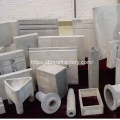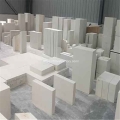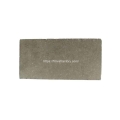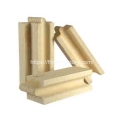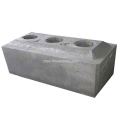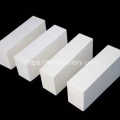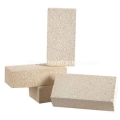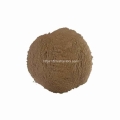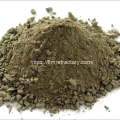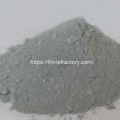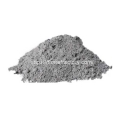- Performance. Innovation. Worldwide. Your trustworthy Refractories Manufacturing Partner--Fireramo
- +86 175 3769 7777
Contact
Contact us on WhatsApp
High Quality Refractory Bricks
Insulation Bricks for Sale
Monolithic Refractory
Electric arc furnace is a commonly used equipment in iron and steel smelting, which utilizes electrodes to generate high temperatures to melt ores. Electric arc furnace is an indispensable equipment in the steel smelting process, its furnace body using a variety of refractory materials composition. The refractory materials used for electric arc furnace lining are very important, and the right materials can ensure that the electric arc furnace plays a stable performance and prolong the life of the furnace. Today Fireramo has compiled a list of five types of lightweight refractory bricks commonly used for electric arc furnace linings.

Why choose lightweight fire bricks for electric furnace lining?
In the masonry electric furnace body, often divided into refractory layer, high temperature refractory insulation layer, medium temperature refractory insulation layer, etc.. In order to reduce the heat storage of the furnace wall itself and the heat lost through the furnace wall to the outside, in order to shorten the warming time, saving heat energy, often near the furnace lining of high-temperature refractory layer near a layer of thermal resistance, both refractory and heat preservation of lightweight refractory materials.
Although the bulk density of this material is only 0.4 ~ 1.3g/cm3, but can withstand high temperatures of more than 1200 ℃, is widely used as furnace lining and high-temperature insulation layer materials. But also because of its low bulk density, high porosity, resulting in low mechanical strength, poor wear resistance, chemical corrosion resistance is also poor, selection should be considered when the high temperature mechanical strength can meet the requirements.
Lightweight refractory bricks have three manufacturing methods: burning off the addition method (usually add wood chips), foam method and chemical method. Currently commonly used lightweight refractory bricks are lightweight refractory clay bricks, lightweight refractory silica bricks, lightweight refractory high alumina bricks and so on.
Five kinds of electric furnace lining commonly used refractory bricks
lightweight refractory clay brick
Lightweight refractory clay brick is fired clay clinker as the main raw material, bulk density according to the corresponding grade is not greater than 0.4 ~ 1.3g/cm3.
Fireclay Insulation Brick | NG-0.5 | NG-0.6 | NG-0.8 | NG-1.0 |
Al2O3(%) ≥ | 35 | 40 | 42 | 42 |
Fe2O3(%) ≤ | 2.5 | 2.5 | 2 | 2 |
Bulk Density (g/cm3) ≤ | 0.5 | 0.6 | 0.8 | 1 |
Cold Crushing Strength(Mpa) ≥ | 1 | 1.5 | 2 | 2.5 |
Linear Change On Reheating 2% (ºC*h) ≤ | 1000ºC*12h | 1150ºC*12h | 1200ºC*12h | 1200ºC*12h |
Thermal Conductivity(w/m.k,{350±25ºC})≤ | 0.18 | 0.25 | 0.35 | 0.5 |
Maximum Service Temperature (ºC) ≥ | 1000 | 1100 | 1150 | 1200 |
Lightweight refractory clay brick is mainly used for heat treatment furnace lining, can also be used for high-temperature insulation materials for the furnace. Its weakness is large porosity, poor abrasion resistance, load softening start temperature is only about 1100 ℃, poor thermal stability, refractoriness and clay brick close.
Lightweight insulation silica bricks
Lightweight insulation silica bricks are used in the masonry part of the temperature does not exceed 1550 ℃, the second level of bricks used as high-temperature insulation materials.
Lightweight refractory silica bricks | LWS-1.2 | LWS-1.0 | LWS-0.8 | |
SiO2(%) | 92 | 92 | 90 | |
Fe2O3(%) | 0.6 | 0.57 | 0.52 | |
CaO(%) | 2.5 | 2.7 | 3 | |
Bulk Density(g/cm³) | 1.2 | 1 | 0.8 | |
Cold Crushing Strength(Mpa) | 5 | 4.5 | 3 | |
Refractoriness(ºC) | 1640 | 1620 | 1610 | |
Linear Change(%) | 1480ºC*2h±0.5 | 1450ºC*2h±0.5 | 1400ºC*2h±0.5 | |
Thermal Conductivity(W/m•k) | 400ºC | 0.36 | 0.3 | 0.26 |
600ºC | 0.39 | 0.33 | 0.29 | |
800ºC | 0.41 | 0.36 | 0.31 | |
1000ºC | 0.44 | 0.39 | 0.34 |
Lightweight refractory silica bricks have a high load softening temperature (1600 ℃ or so), and high-temperature residual expansion in the 0.2% or less, widely used in electric arc furnace roof, furnace wall parts.
Lightweight refractory high alumina bricks
Lightweight refractory high alumina bricks bulk density of 0.4 ~ 1.0g/cm3. Density can be used for direct contact with the flame parts, but should not be flushed with high gas flow or high temperature melting parts of contact. Small density for thermal insulation, the use of temperature should not be higher than 1450 ℃.
Lightweight refractory high alumina bricks | High Alumina Refractory Insulating Brick, Insulation Brick | |||
LG-0.6 | LG-0.8 | LG-1.0 | LG-1.3 | |
Al2O3% ≥ | 45 | 48 | 48 | 48 |
Fe2O3% ≤ | 2 | 2 | 2 | 2 |
Bulk Density (g/cm3) ≤ | 0.6 | 0.8 | 1 | 1.3 |
Cold Crushing Strength(MPa) ≥ | 1.8 | 2.5 | 3 | 5 |
Linear Change On Reheating 2% (ºC*h) ≤ | 1200ºC*12h | 1250ºC*12h | 1300ºC*12h | 1350ºC*12h |
Thermal Conductivity(w/m.k,{350±25ºC}) ≤ | 0.25 | 0.32 | 0.45 | 0.55 |
Maximum Use Temperature (ºC) ≥ | 1250 | 1250 | 1300 | 1350 |
Lightweight high alumina bricks are used for masonry of all kinds of high temperature kilns, electric furnaces and high temperature insulation materials.
Alumina Bubble Brick
Alumina Bubble Bricks from fine powder processing and firing, nature is better than high alumina bricks, commonly used in electric furnaces at high temperatures parts of the thermal insulation materials, the use of the temperature of 1300 ℃, the temperature will be too high shrinkage deformation.
Item | Alumina Bubble Brick | |
CH-90 | CH-99 | |
Al2O3(%) | ≥90 | ≥99 |
SiO2(%) | ≤0.5 | ≤0.2 |
Maximum Service Temperature( ºC) | 1700 | 1800 |
Bulk Density(g/cm3) | 1.4-1.7 | 1.4-1.7 |
Cold Crushing Strength(Mpa) | ≥10 | ≥9 |
Refractoriness Under Load (0.1Mpa, 0.6%) (ºC) | ≥1700 | ≥1700 |
Thermal Conductivity ( hot surface 1000ºC)(w/m.k) | ≤1.3 | ≤1.5 |
Alumina refractory hollow ball
With the development of science and technology, some advanced refractory insulation materials continue to appear, such as alumina hollow ball is an example. Alumina refractory hollow ball is used in granular form, can also be added to the appropriate binder molding after masonry.
The above lightweight refractory bricks are widely used in electric furnace lining, if you have any purchasing or technical requirements, please contact Fireramo.
Specializing in refractory materials for over 20 years, we provide professional refractory solutions for the global high temperature industry.
Related Posts:
- Causes and solutions to cracking of castables after baking
- Enhancing the Medium Temperature Strength of Refractory Castables
- Ways to ensure the accuracy of refractory brick acceptance results
- Acceptance inspection after cement kiln construction
- Three Common Ways of Damage to the Sliding Nozzle for Ladles
Theme By Fireramo
